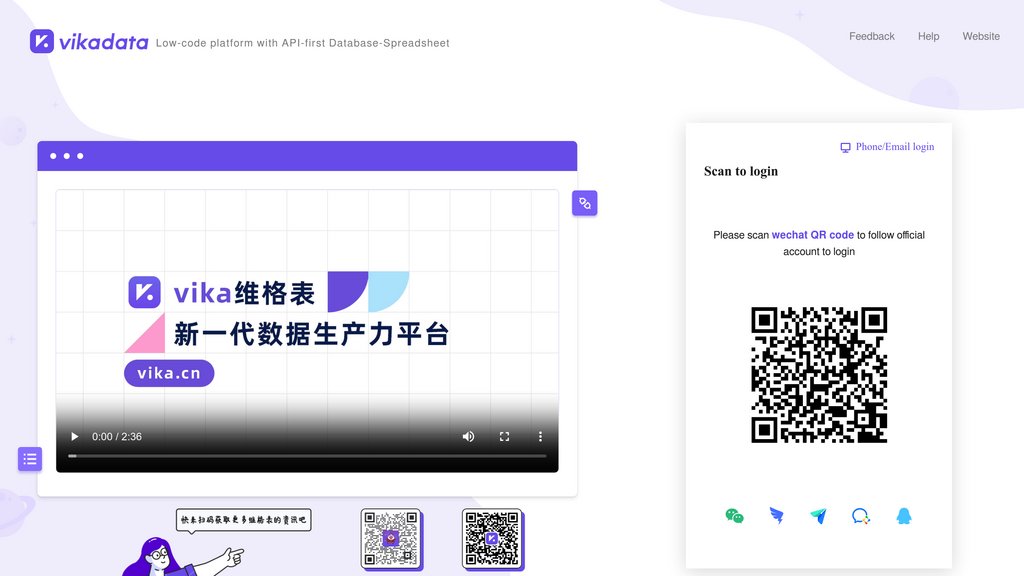vika维格云
Smart spreadsheet database for team collaboration and business automation
Introduction
What is vika维格云?
Vika Cloud is a next-generation data productivity platform that transforms team data management and collaboration. It leverages API-driven multi-dimensional tables, blending the intuitive layout of spreadsheets with the strength of databases to let users design tailored business applications code-free. The system facilitates live teamwork, automated processes, data dashboards, and smooth connections with external tools. Established in 2019, Vika has attracted investment from leading firms and supports more than 9,000 enterprises in 14 nations, with notable customers such as Tencent Entertainment Group and Ping An Bank.
Key Features:
• API-Driven Multi-Dimensional Tables: A versatile hybrid of spreadsheets and databases, featuring over 100 open APIs for effortless data sync and automated workflows across various platforms.
• Live Team Collaboration: Enables thousands of users to work together at once with immediate updates, granular permissions, and alerts via DingTalk, WeChat Work, and Feishu.
• Drag-and-Drop Form Creator: An intuitive form builder for gathering data that auto-populates tables, simplifying information collection and management.
• Workflow Automation: Integrated automation tools and bots to streamline processes, generate reports, assign tasks, and send alerts without manual input.
• Interactive Data Dashboards: Instant BI dashboard creation with live data feeds, diverse viewing modes, and customizable charts for deep business intelligence.
Use Cases:
• Project Management: Monitor project timelines, assign resources, coordinate activities, and oversee portfolios with automated status alerts and team communications.
• Customer Relationship Management: Maintain client records, follow sales cycles, track support interactions, and assess customer trends.
• E-commerce Management: Consolidate sales data from various channels, control stock, handle orders, and evaluate shopper feedback for smoother operations.
• Human Resources Administration: Manage staff details, recruitment pipelines, performance reviews, and payroll through automated systems.
• Supply Chain Oversight: Supervise vendor data, monitor shipments, manage inventory, and refine purchasing flows throughout the supply network.
